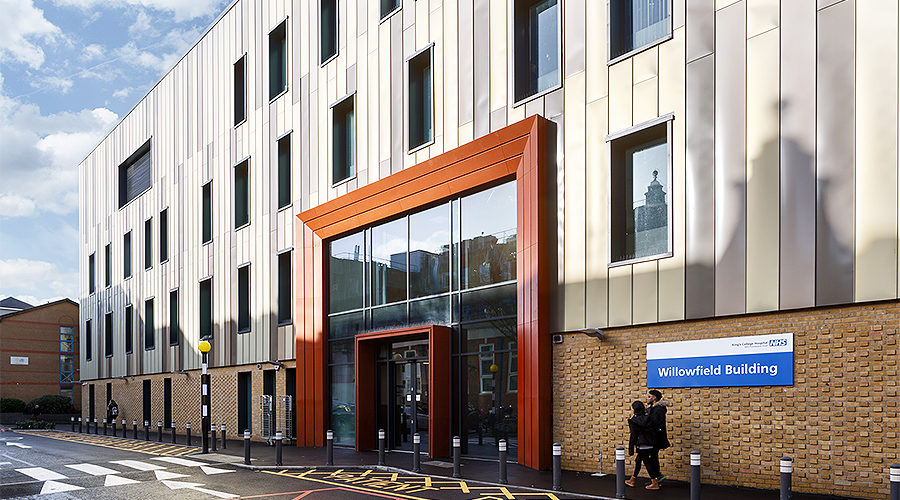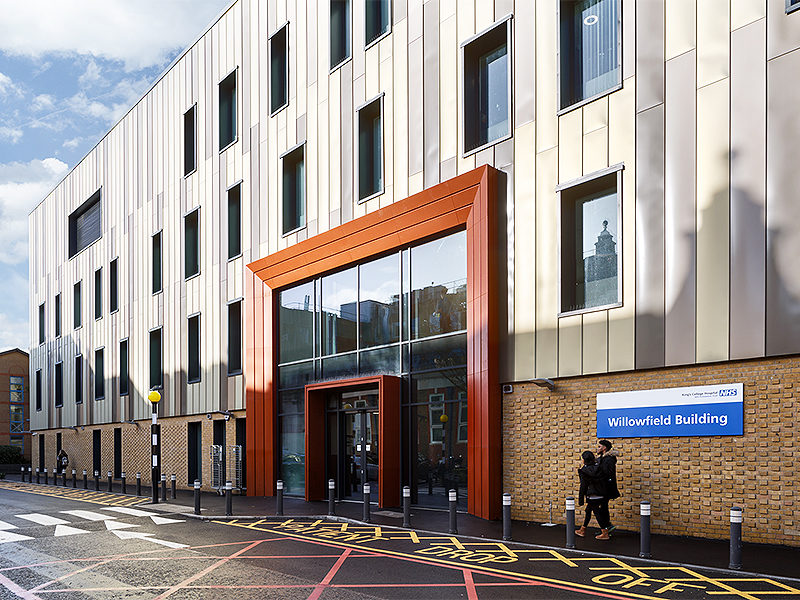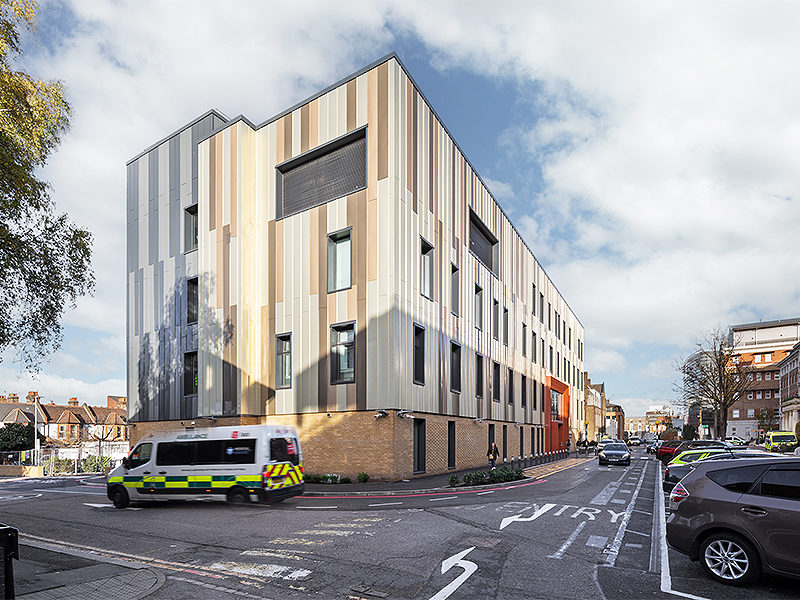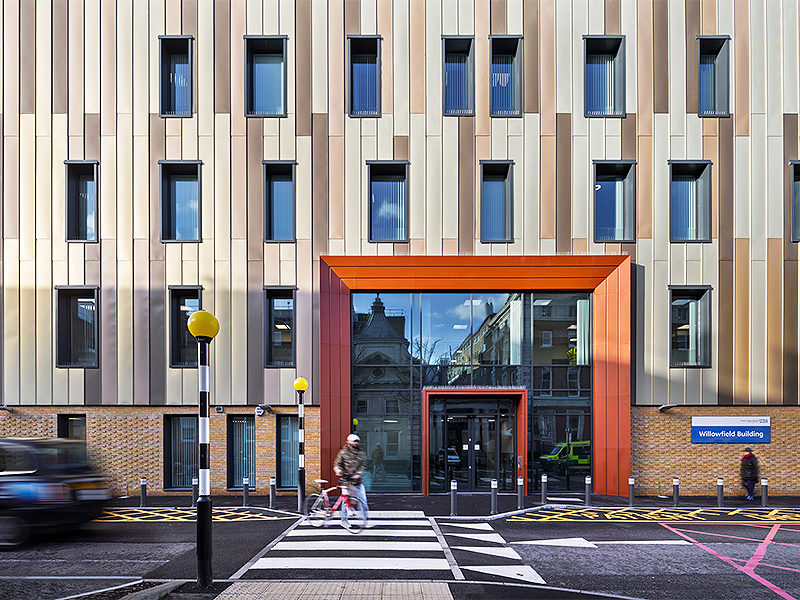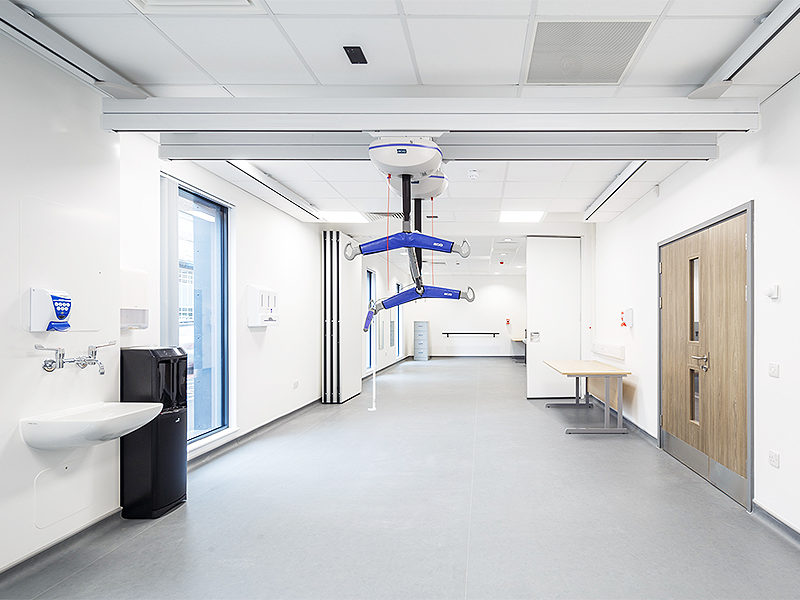Nathalie Meunier, National Business Development Director at Premier Modular, states three healthcare building trends, gathering these insights from Premier’s work with NHS trusts – using King’s College Hospital as an example to show how challenges were overcome with better, more sustainable building solutions, all while minimising disruption to the live site.
Premier Modular
Working alongside King’s College Hospital NHS Foundation Trust, Premier Modular provided additional modular space – enabling the trust to care for patients efficiently throughout the development. Setting an example for the industry, see how King’s College’s recent project has responded to healthcare trends.
Trend 1: Building new space to relieve waiting times
NHS trusts continually need to reduce waiting targets, which often involves new or improved building capacity.
King’s College Hospital required a new, four-storey outpatient unit, choosing an offsite solution because:
• The construction programme was halved (vs a conventional bricks and mortar build)
• Groundworks were done simultaneously with the building’s manufacture
• Minimal disruption on site
• Each floor could be opened separately – for example, two new floors were in use before the remaining floors were completed.
To reduce the timing of the building’s installation, Premier Modular collaborated with King’s College’s estate team and traffic management to ensure there was no disruption to 24/7 A&E services. To minimise interruption of live healthcare sites, modular units were delivered and installed at low-occupancy times.
By building bespoke offsite units, the NHS can battle waiting targets sooner, without disrupting the normal operation of the estate.
Trend 2: Providing technical design solutions for a synergised and sustainable environment
Hospital personnel are sometimes wary of modular buildings having what they term a ‘modular atmosphere’. When untangled, these views are often created based on old-fashioned units with inferior interiors or poor building controls.
Modern and robust modular designs give hospitals comfort, as well as other qualities, such as acoustics, which feel just as they would if they were built from bricks and mortar, but without numerous trades on site or the prolonged build programme.
The most demanding and dynamic healthcare environments – such as operating theatres – are now being built off site before being installed on site for many reasons.
A seamless connection between the original building and King’s College’s new building was key to enhancing service continuity and patient flow. The project’s floorplan was essential in meeting this need, as floors have a powerful impact on how we judge buildings.
Premier Modular’s designers selected a high-quality gypsum fibreboard – called Knauf GIFA FHB – which is laid over Premier’s floor substrate. GIFA meets the project’s specific floor dynamics, such as heavy pedestrian and hospital trolly traffic.
GIFA boards also have tongue and groove edges, sitting over joists and creating a lightweight but robust monolithic floor. The loading performance can be further enhanced with additional support from the Premier frame.
With no need to wait for concrete to cure, hospital units were operational in days rather than weeks compared with using concrete. By choosing GIFA, King’s College made significant savings to time and costs.
All the steelwork in Premier’s floor frames and cassettes is recyclable, improving the sustainability of the building without the loss of performance.
Modular buildings can be repurposed or remodelled as needs change – which is why many NHS trusts choose to fund their buildings from operational rather than capital expenditure.
The materials used in this factory-building process are 100% reusable or recyclable, with zero waste to landfill – therefore providing a sustainable solution to healthcare.
Trend 3: Increasing energy efficiency
Every NHS trust must align with the new NHS Net Zero Building Standard, which works towards lowering the U-values of healthcare buildings by making them more airtight and energy efficient.
To reduce U-values, the NHS must embrace modern technology, such as mechanical, electrical and plumbing (MEP) systems, air-source heat pumps (ASHP) and air-handling units (AHU) – which are all making significant changes to energy consumption.
Connecting a building management system (BMS) to mechanical and electrical (M&E) services allows cost-effective control of energy usage, as it works by optimising energy consumption based on opening hours and efficiencies in light or heat gain.
Solar gain is commonplace for natural heat entering healthcare buildings, and the BMS balances this incoming heat with natural ventilation and air con. Intelligent programming balances out a hospital’s energy use with the occupancy of its buildings based on its PIR (movement/motion) sensors.
King’s College’s new modular building not only meets current healthcare needs but is also well placed to continue to improve how well it performs and serves its patients. The system will be fine tuned so those savings are combined.
The new building has been certified as BREEAM ‘Excellent’, ticking off requirements such as carbon emissions and the reduction of energy use.
To minimise energy usage, King’s College will see a significant reduction of carbon emissions (48.16%), with:
• A highly energy-efficient system for precise heating and cooling
• An efficient radiant panel system, powered by air-source heat pumps to replace radiator heating
• Photovoltaic (PV) solar panels, which will generate approximately 45kWp of electricity output.
Determining the right sustainable solution for site
Many NHS trusts are located in congested areas and are disparate, having been built over decades or centuries.
The key to adding a new building to an NHS estate is to collaborate with a variety of stakeholders – both clinical and non clinical – to learn what the building needs and to define factors such as timing, budgets and space.
Complex needs often get lost in translation, so it’s essential the NHS works with personnel who understand how to complete as much as possible off site, assemble efficiently on site and use renewable technologies to embrace sustainability.
The future
Modern methods of construction are often the solution to NHS trusts’ problems. When building off site, groundworks occur in parallel with the building coming together in the factory, therefore, speeding up the construction programme. All this collates so that NHS services carry on without disruption.



